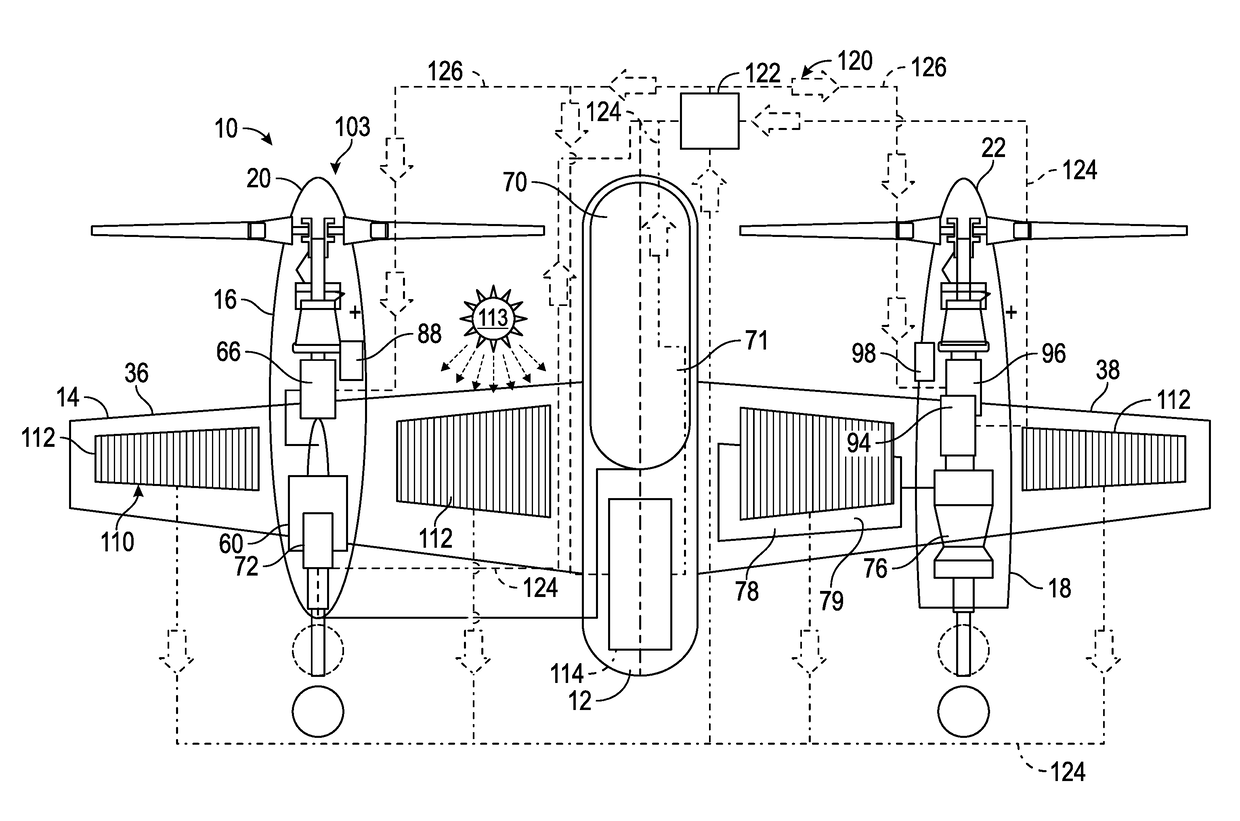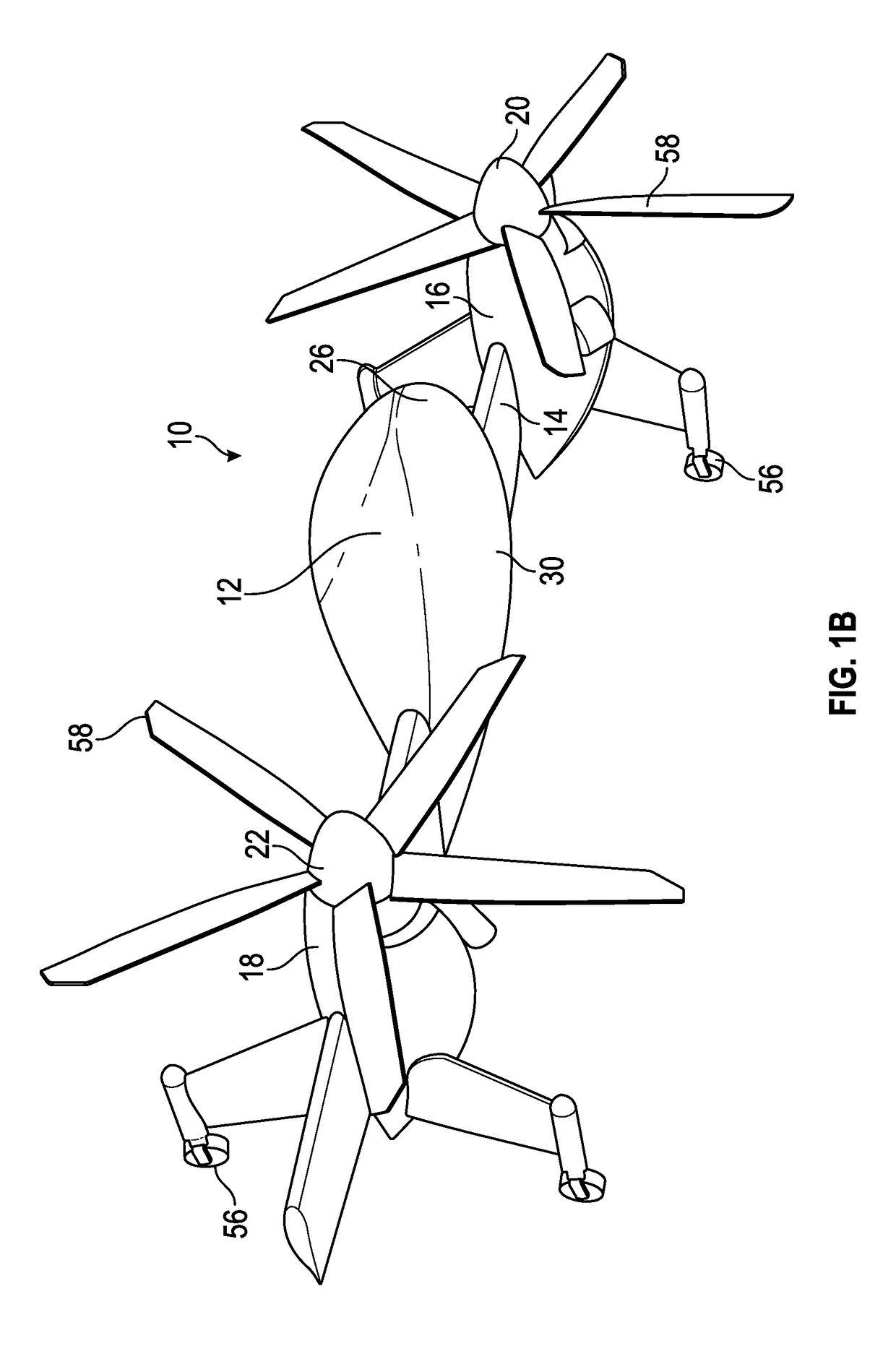Vertical take-off and landing aircraft with hybrid power and method
a technology of vertical take-off and landing and hybrid power, applied in the field of rotorcraft, can solve the problems of affecting the desirable endurance of the aircraft, requiring more power from the engine, and requiring a long enduran
- Summary
- Abstract
- Description
- Claims
- Application Information
AI Technical Summary
Benefits of technology
Problems solved by technology
Method used
Image
Examples
Embodiment Construction
[0033]Referring now to the drawings, FIGS. 1A and 1B illustrate perspective views of an embodiment of a VTOL vehicle in the form of a tail-sitter aircraft 10 for providing high speed, and endurance flight. As illustrated, tail-sitter aircraft 10 includes a fuselage 12, an elongated wing structure 14, a plurality of nacelles 16, 18, and a plurality of rotors 20, 22. FIG. 1A shows an embodiment of the aircraft 10 as it may be orientated during take-off (or hover) in a rotor-borne flight state, where longitudinal axis 24 of fuselage 12 is oriented in a vertical direction and may be substantially perpendicular with respect to a ground plane. FIG. 1B shows an embodiment of the aircraft 10 during a cruise (wing-borne flight), where the wing structure 14 and fuselage 12 can be substantially parallel to the ground plane. The fuselage 12 is generally located in the middle of wing structure 14. The fuselage 12 may have an aerodynamic shape with a nose section 26, a trailing end 28 opposite fr...
PUM
 Login to View More
Login to View More Abstract
Description
Claims
Application Information
 Login to View More
Login to View More - R&D
- Intellectual Property
- Life Sciences
- Materials
- Tech Scout
- Unparalleled Data Quality
- Higher Quality Content
- 60% Fewer Hallucinations
Browse by: Latest US Patents, China's latest patents, Technical Efficacy Thesaurus, Application Domain, Technology Topic, Popular Technical Reports.
© 2025 PatSnap. All rights reserved.Legal|Privacy policy|Modern Slavery Act Transparency Statement|Sitemap|About US| Contact US: help@patsnap.com



